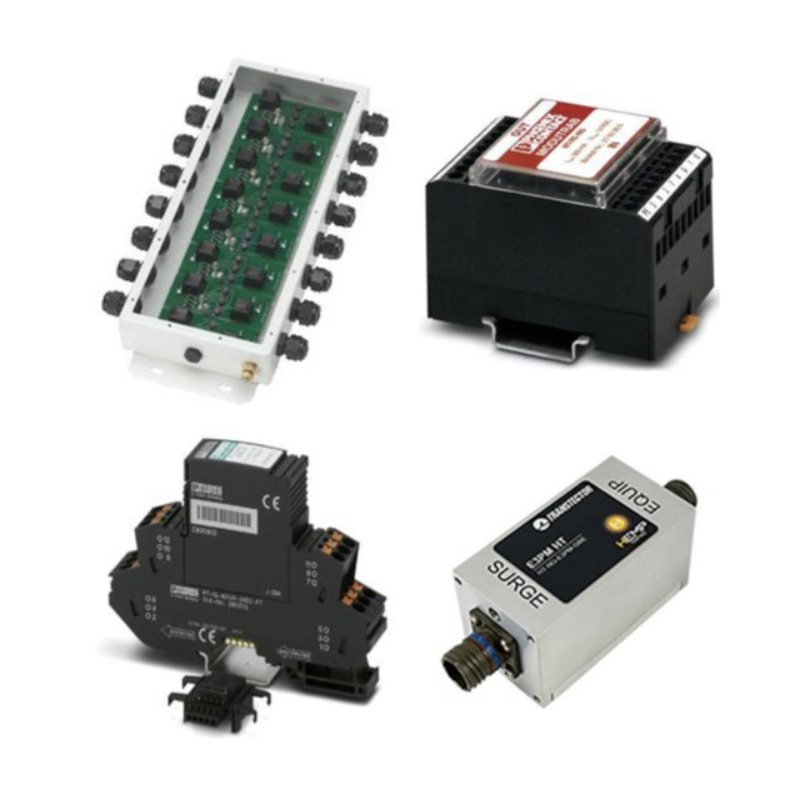Data & Signal Surge Protectors

Data and signal surge protectors are critical for protecting low-voltage communication and control lines from damaging voltage transients. These surges can be caused by lightning strikes, power fluctuations, switching events, or electromagnetic interference and can disrupt or permanently damage sensitive electronic equipment. Surge protection devices are designed to absorb excess energy and divert it safely to ground, preserving the integrity of connected systems.
These protectors are commonly used to safeguard Ethernet networks, RS-232 and RS-485 communication lines, 4–20 mA current loops, and other control and instrumentation circuits. Equipment such as routers, switches, programmable logic controllers (PLCs), remote sensors, and automation devices rely on signal surge protection to maintain reliable operation in industrial, commercial, and IT environments where uninterrupted communication is essential.
Many data and signal surge protectors feature pluggable designs for ease of installation and maintenance. These devices can be DIN rail mounted or integrated into control panels and structured wiring enclosures. Internally, they use technologies such as gas discharge tubes and transient voltage suppression (TVS) diodes to allow normal signal transmission while rapidly diverting harmful overvoltage events away from sensitive circuitry.
FAQs
Q: What are data and signal surge protectors used for?
Data and signal surge protectors are used to protect low-voltage communication and control lines from voltage spikes caused by lightning, power disturbances, or electromagnetic interference.
Q: Which signal types can be protected by these devices?
Commonly protected signal types include Ethernet, RS-232, RS-485, 4–20 mA current loops, and other low-voltage data and control circuits.
Q: Can surge protectors help maintain reliable operation in critical systems?
Yes, surge protectors help maintain system reliability by diverting high-voltage surges away from sensitive electronic equipment, reducing the risk of damage and downtime.
Q: How are data and signal surge protectors installed?
Many signal surge protectors are plug-in devices designed for DIN rail mounting or panel installation, allowing for straightforward integration and maintenance.
Q: What technologies are used in signal surge protection devices?
Most devices use gas discharge tubes, transient voltage suppression diodes, or a combination of both to react quickly to overvoltage conditions while allowing normal signal transmission.
Why Buy Data & Signal Surge Protectors from RSP Supply
RSP Supply offers a wide selection of data and signal surge protectors designed for industrial automation, IT infrastructure, and control systems. Our products support common communication protocols and low-voltage circuits while delivering reliable overvoltage protection. Customers rely on RSP Supply for technical expertise, dependable sourcing, and surge protection solutions that help preserve system performance and equipment longevity.

